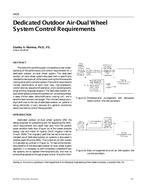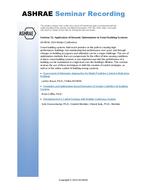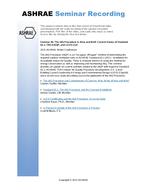The reverberation room is presently considered as the most convenient environment for the determination of sound power, both for a source radiating broadband sound and for a source whose spectrum contains discrete frequency components. ANSI S12.31-1990 and ANSI S12.32-1990 provide adequate guidance for sound power measurements down to the 100 Hz one-third octave band. But recent changes in building design and construction have generated significant noise problems from HVAC equipment at frequencies below the 125 Hz octave band. ASHRAE is interested in extending the current ANSI standards down to the 31 Hz octave band for use in typical reverberation rooms i.e. with volumes of approximately 7063 ft3 (200 m3). This report covers the work done by the Acoustics Laboratory of IRC at the National Research Council of Canada on behalf of ASHRAE under contract The investigation was designated as ASHRAE Research Project 624-RP.
The main areas covered in this investigation and reported here are:
(1) Literature review.
(2) Investigation of the possibility of making low-frequency sound power measurements in reverberation rooms of normal size. This was done by making very detailed sound field measurements in a model room.
(3) Detailed study of the reproducibility of the substitution method in a number of rooms with different sizes and configurations for one-third octave and pure-tone measurements.
(4) Use of the intensity scan method to calibrate sound sources for establishing the accuracy of the substitution method.
(5) Modification of the standard ILG sound source to make it suitable for low frequency applications.
(6) Broad-band and pure-tone qualification tests performed in the large reverberation room of IRC/NRC. The tests were extended to 25 Hz one-third octave-band.
Product Details
- Published:
- 1992
- Number of Pages:
- 163
- File Size:
- 1 file , 3.9 MB
- Product Code(s):
- D-RP-624


